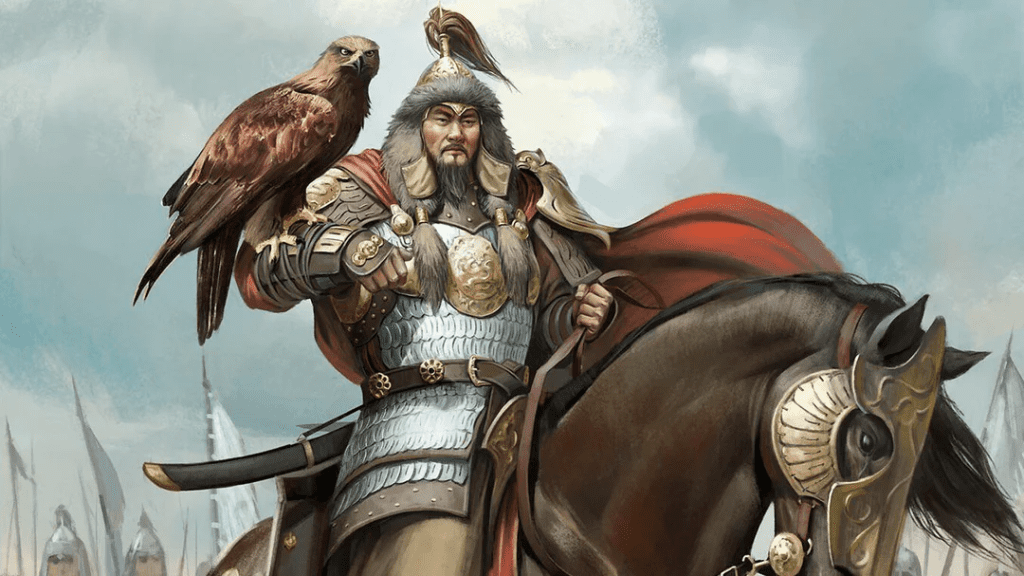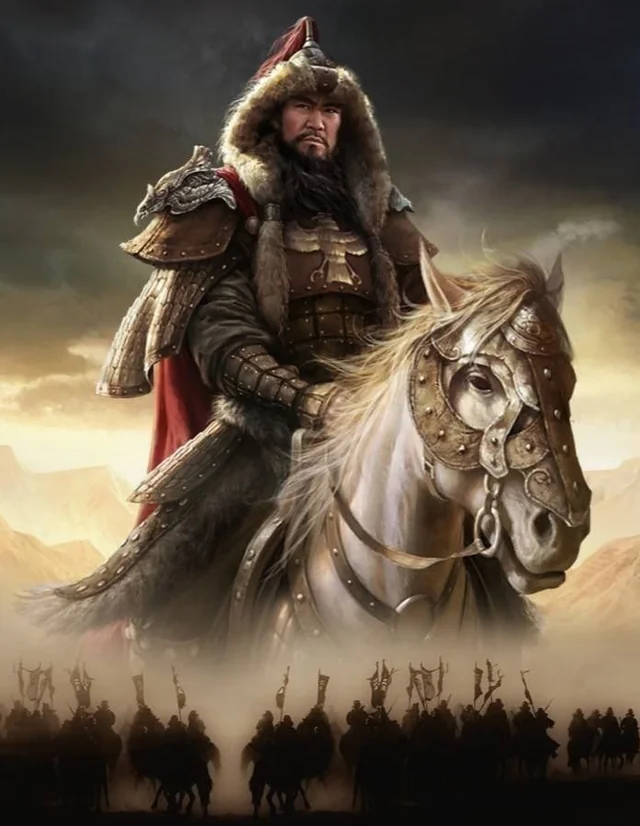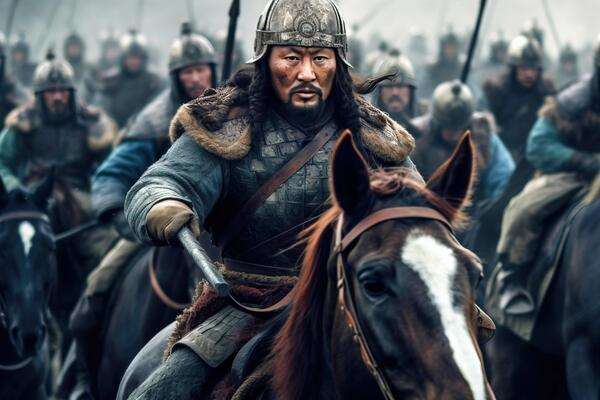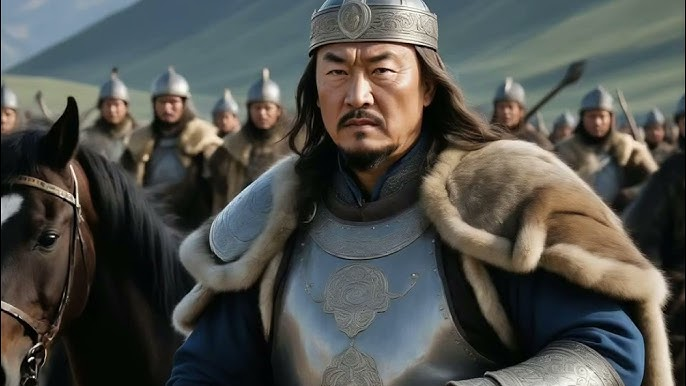When we think about world-changing empires, the usual suspects come to mind Rome, Britain, or maybe even the Ottomans. But few leaders have left as massive and bloody a mark on history as Genghis Khan. Born as Temüjin in the windswept steppes of Mongolia, this once-nameless nomad transformed tribal chaos into military dominance, founding the largest contiguous land empire the world has ever seen.

A Mongol Storm Unleashed
By the early 1200s, Genghis Khan had unified the warring Mongol tribes under one banner. His next move? Expansion. Fueled by an unquenchable thirst for conquest and backed by disciplined horsemen, the Mongol armies spread rapidly. Their tactics were unmatched fast, brutal, and strategic. They used psychological warfare, deception, and terror as weapons just as much as swords and arrows.
The result was devastating.

Cities Erased, Populations Annihilated
As the Mongols thundered westward, entire civilizations crumbled. One of the most tragic examples was Persia. At the time, Persia was flourishing with art, science, and architecture. But when the Mongol armies reached its borders, they brought destruction that would scar the land for generations.
Video:
Genghis Khan Explained In 8 Minutes
Historical records suggest that the population of Persia dropped from approximately 2.5 million to just 250,000 during the Mongol campaigns. That’s a staggering 90% loss worse than most plagues or natural disasters. Entire cities like Nishapur and Herat were wiped off the map. In some regions, the only survivors were those needed to tell the tale or rebuild roads for the Mongol advance.
Not Just War A Calculated Strategy
This wasn’t random slaughter. Genghis Khan understood that terror could be as effective a weapon as any sword. If one city resisted, it would be annihilated. If the next surrendered, they’d often be spared. Word traveled fast in the medieval world. This calculated cruelty allowed the Mongols to conquer vast territories with relatively fewer battles.
The Mongols didn’t just destroy they rewrote the rules of war. They adopted technologies from the Chinese, siege tactics from the Muslims, and administrative systems from the Persians. In this way, they weren’t just conquerors they were globalizers before globalization was a word.

The Long Shadow of the Empire
By the time of Genghis Khan’s death in 1227, the Mongol Empire stretched from the Pacific Ocean to the Caspian Sea. His successors would push even further into Eastern Europe, the Middle East, and deep into Asia.
Video:
Was Genghis Khan Really As Barbaric As We Think? | Line Of Fire | Chronicle
The human cost was horrific, but the aftermath also saw the rise of a vast trade network. The famous Silk Road thrived under Mongol protection. East met West in ways never seen before. Ideas, goods, and technologies moved with a speed and safety unknown in previous centuries. Some historians even argue that this exchange laid the groundwork for the Renaissance in Europe.
A Legacy Written in Blood and Progress
It’s difficult to define Genghis Khan with a single label. Was he a brutal warlord? A visionary leader? A genocidal tyrant? Perhaps he was all of the above. His legacy, soaked in blood, also left behind roads, postal systems, and unprecedented cultural exchanges. He was a paradox both destroyer and innovator.
One thing is certain: the 13th century was never the same after Genghis Khan rode into history. His empire didn’t just stretch across continents it reshaped the world. Whether we remember him with awe, horror, or fascination, the echo of his hoofbeats still thunders through the pages of history.



